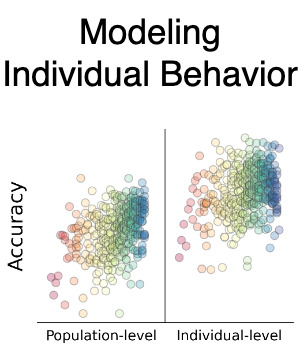The main code used in this project is stored in backend which is setup as a Python package, running python setup.py install will install it. Then the various scripts can be used. We also recommend using the virtual env config we include in environment.yml as some packages are required to be up to date. In addition for generating training data two more tools are need pgn-extract to clean the PGNs and trainingdata-tool to convert them into training data.
To run a model as a chess engine lco version 23 has been tested and should work with all models (you can specify a path to a model with the -w argument).
All testing was done with Ubuntu 18.04 with CUDA Version 10.
We do not have any public models of players publicly available at this time. This is because of the stylometry results shown in section 5.2 of the paper we cannot release anonymous models.
We have included the maia model, from https://github.com/CSSLab/maia-chess that was used as the base.
The code for this project is divided into different sections, each has a series of shell scripts that are numbered. If ran in order the training data, then final models can be generated. For the full release we plan to have the process to generate a model more streamlined.
To get the model for a single player from a single PGN a simpler system can be used first
- Run
1-data_generation/9-pgn_to_training_data.sh input_PGN_file output_directory player_name - Create a config file by copying
2-training/final_config.yamland addingoutput_directoryandplayer_name - Run
python 2-training/train_transfer.py path_to_config - The final model will be written to
final_models, read the--helpfor more information
For all scripts if applicable they start with a list of variables, these will need to be edited to match the paths on your system.
The list of players we used was selected using the code in 0-player_counting. The standard games from lichess database.lichess.org up to April are required to get our exact results but it should work with other sets, even non-Lichess ones with a bit of work.
Then the players games are extracted and the various sets are constructed from them in 1-data_generation.
Finally 2-training has the main training script along with a configuration file that specifies the hyper parameters. All four discussed in the main text are included.
The analysis code (3-analysis) is included for completeness, but as it is for generating the data used in the plots and relies on various hard coded paths we have not tested it. That said 3-analysis/prediction_generator.py is the main workhorse and has a --help, note it is designed for on files output by backend.gameToCSVlines, but less complicated csvs could be used.
The baseline models code and results are in 4-cp_loss_stylo_baseline this is a simple baseline model to compare our results to, and is included for completeness.
The model configurations for the reduced data training are included in 9-reduced-data/configs To train them yourself simply use the configs in the quick run training.
@article{McIlroyYoung_Learning_Models_Chess_2022,
author = {McIlroy-Young, Reid and Sen, Siddhartha and Kleinberg, Jon and Anderson, Ashton},
doi = {10.1145/3534678.3539367},
journal = {KDD '22: Proceedings of the 28th ACM SIGKDD International Conference on Knowledge Discovery & Data Mining},
month = {8},
title = {{Learning Models of Individual Behavior in Chess}},
year = {2022}
}
The software is available under the GPL License and includes code from the Leela Chess Zero project.
Please open an issue or email Reid McIlroy-Young to get in touch
